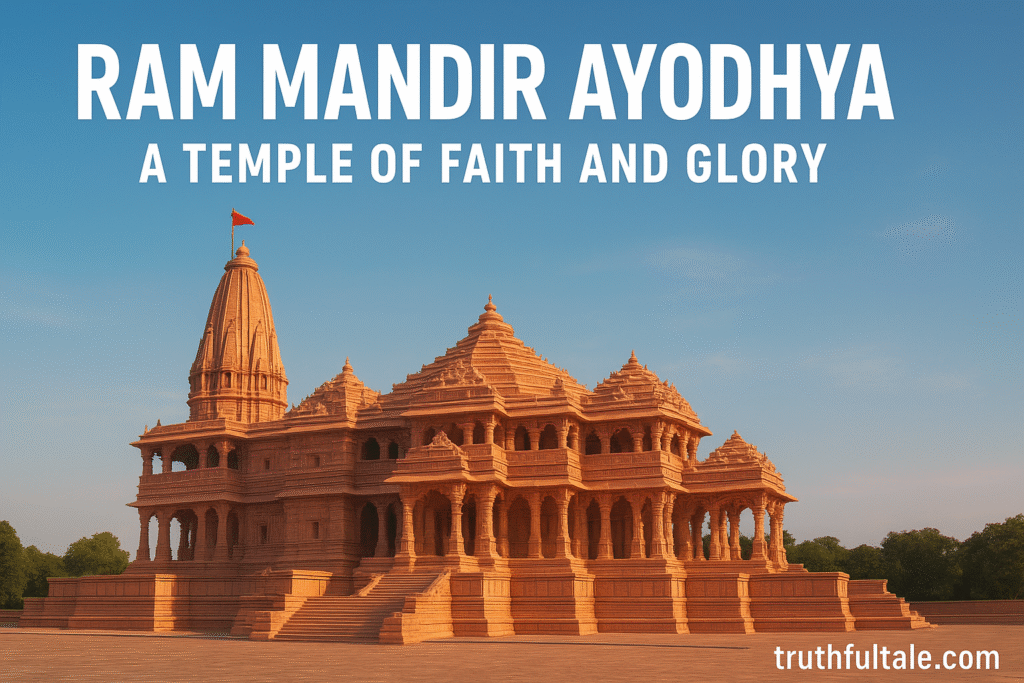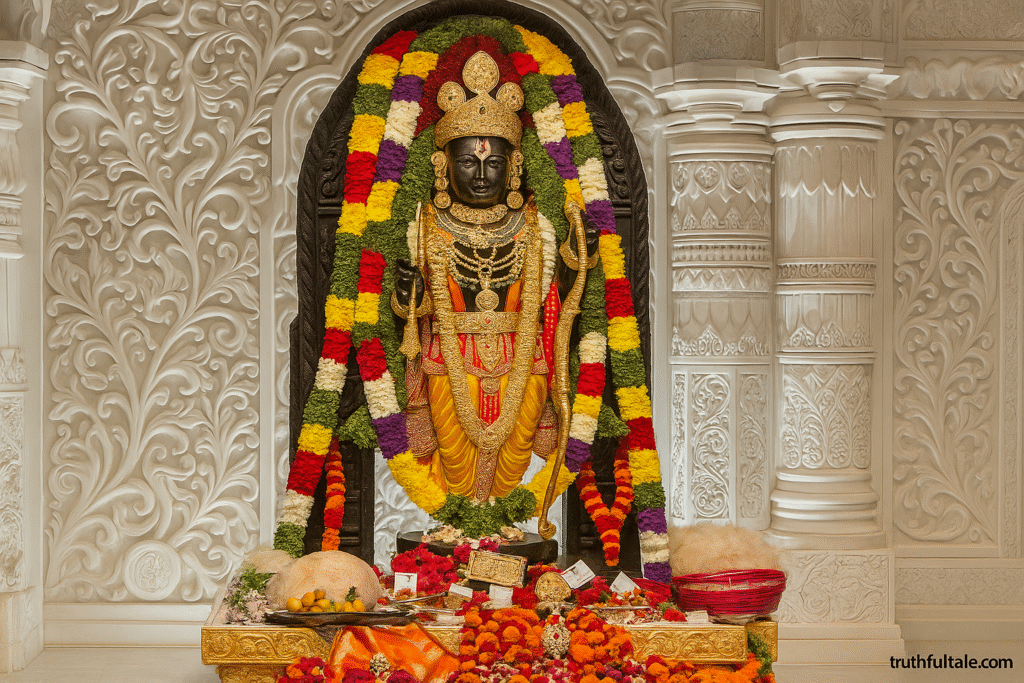Ram Mandir Ayodhya: A Temple of Faith and Glory
The Ram Mandir in Ayodhya is one of the most awaited and sacred temples of India. Dedicated to Lord Ram, this temple stands on the very land believed to be his birthplace, known as Ram Janmabhoomi. It is not just a temple, but a symbol of faith, culture, and devotion that connects millions of people across the world.

The History and Story Behind Ram Mandir
Ayodhya is one of the oldest and holiest cities of India. In the epic Ramayana, it is described as the birthplace of Lord Ram, the seventh incarnation of Vishnu. For centuries, Hindus have considered this land sacred.
The temple’s story is also a tale of struggle and hope. After decades of disputes and legal battles, the Supreme Court of India in 2019 finally gave the verdict to build a temple at the Ram Janmabhoomi site. This historic judgment fulfilled the long-awaited dream of millions of devotees.
On 5th August 2020, the foundation stone was laid, and on 22nd January 2024, the idol of Ram Lala was installed in the sanctum, marking a divine moment in history.
The Architectural Heritage of the Sompura Family
The temple’s design has been prepared by the Sompura family, legendary temple architects for more than 15 generations. They are known for building iconic temples across India.
The Ram Mandir follows the Nagara style of architecture, famous for tall spires (shikharas), carved pillars, and intricate stone work. The design combines tradition and modern engineering to ensure strength and beauty for centuries.
The Mystery of the Sacred Foundation
The temple’s foundation is unique and scientifically built to last at least 1,000 years. Unlike modern buildings, no iron or steel has been used, since these materials weaken with time. Instead, special stones, concrete, and soil techniques have been used to make the foundation eternal.
This symbolizes that just like the temple, faith in Lord Ram is everlasting.
The Idol of Ram Lala

The soul of the temple is the idol of Ram Lala (child Ram). Crafted by Arun Yogiraj, a sculptor from Mysuru, the idol is made from black stone and depicts a 5-year-old Lord Ram, standing with a bow and arrow, smiling with divine innocence.
Earlier, a small idol of Ram Lala was worshipped in a temporary structure for decades. Now, devotees witness Ram Lala in a grand Garbhagriha (sanctum sanctorum).
Temple Dimensions and Structure
- Height: 161 feet
- Length & Breadth: 380 feet long and 250 feet wide
- Floors: 3 storeys with 5 domes and one main spire
- Material: Pink sandstone from Bansi Paharpur, Rajasthan
- Pillars: More than 360 intricately carved pillars
- Specialty: No iron or steel used in construction
Festivals and Celebrations at Ram Mandir
The temple is now the center of grand celebrations:
- Ram Navami: Celebrated as Lord Ram’s birthday with great devotion.
- Diwali in Ayodhya: Marks the return of Ram after defeating Ravan. The city is lit up with millions of diyas.
Historical and Cultural Significance
Ayodhya is one of the Sapta Puris (seven most sacred cities in Hinduism). The Ram Mandir represents not only religious devotion but also the resurgence of Indian culture and tradition.
Lord Ram is called Maryada Purushottam, the ideal man who showed values of truth, duty, and compassion. The temple is a reminder that Dharma always wins over Adharma.
Ayodhya: The New Spiritual Destination
The construction of the Ram Mandir has transformed Ayodhya into a global pilgrimage hub. Roads, ghats, and facilities have been developed to welcome millions of pilgrims. The temple has also boosted spiritual tourism and local economy.
Conclusion
The Ram Mandir of Ayodhya is more than a temple—it is a timeless monument of faith, history, and devotion. From ancient myths to modern architecture, every stone tells the story of hope, struggle, and victory of truth.
With the smiling face of Ram Lala blessing devotees, the temple shines as a spiritual light for generations to come.
Stay connected with Truthfultale.com for more stories of faith, culture, and spirituality.
